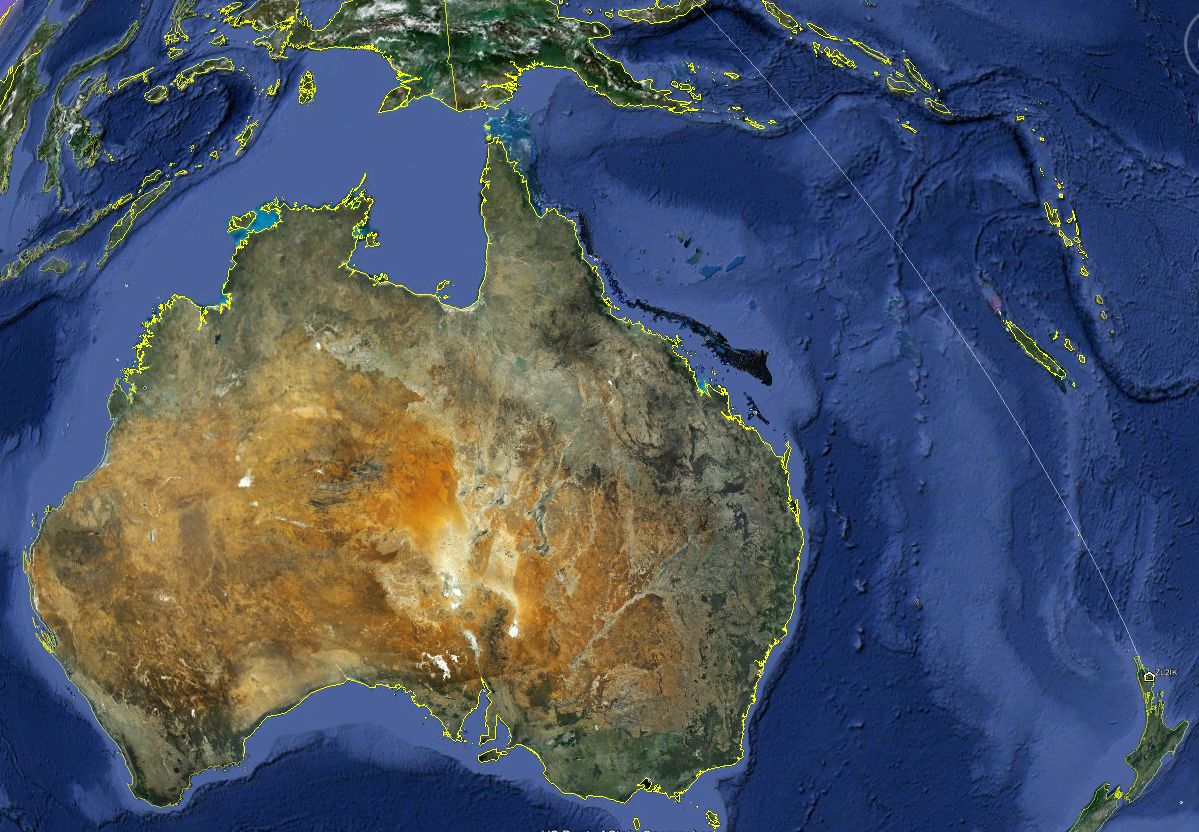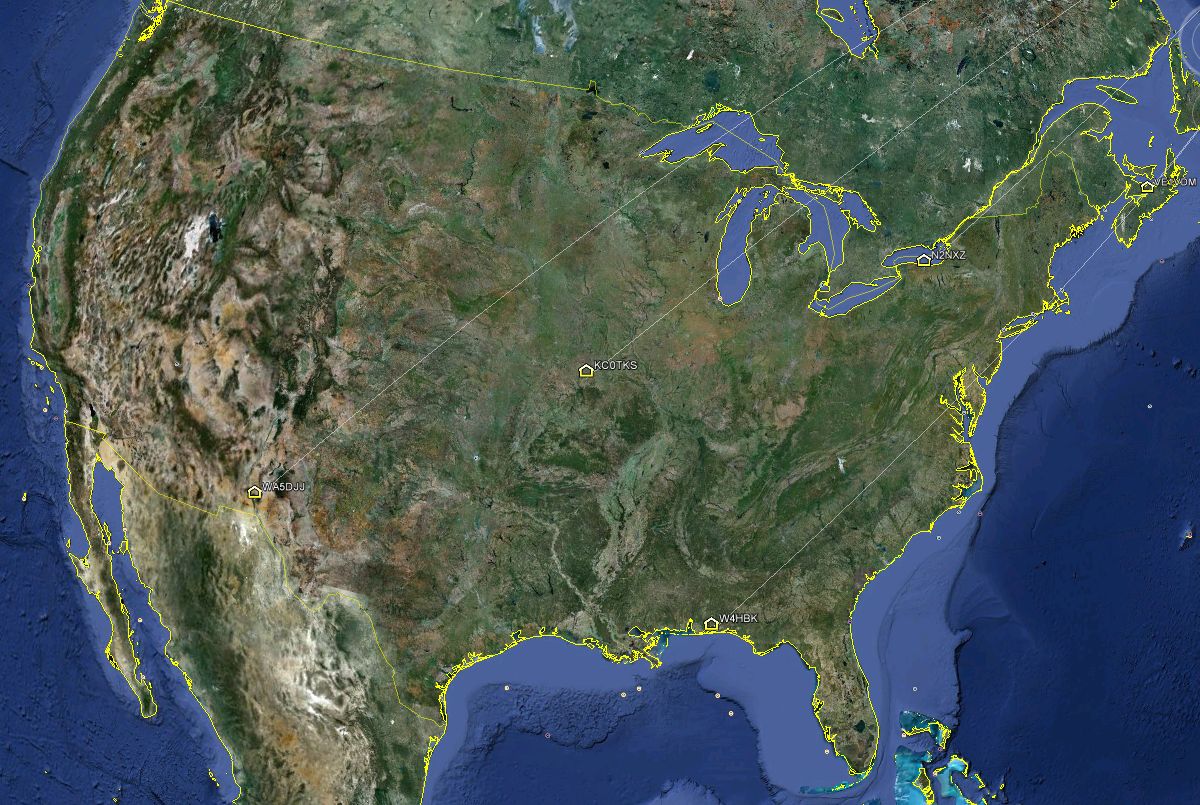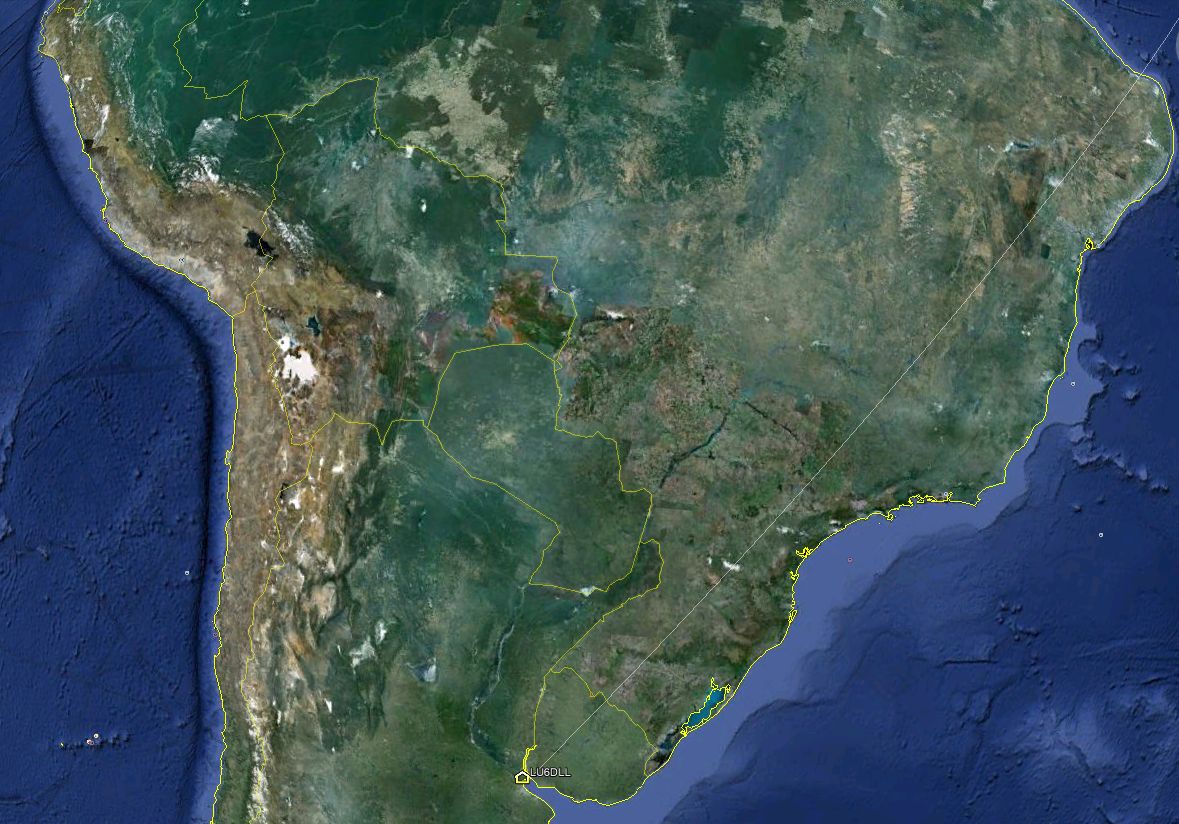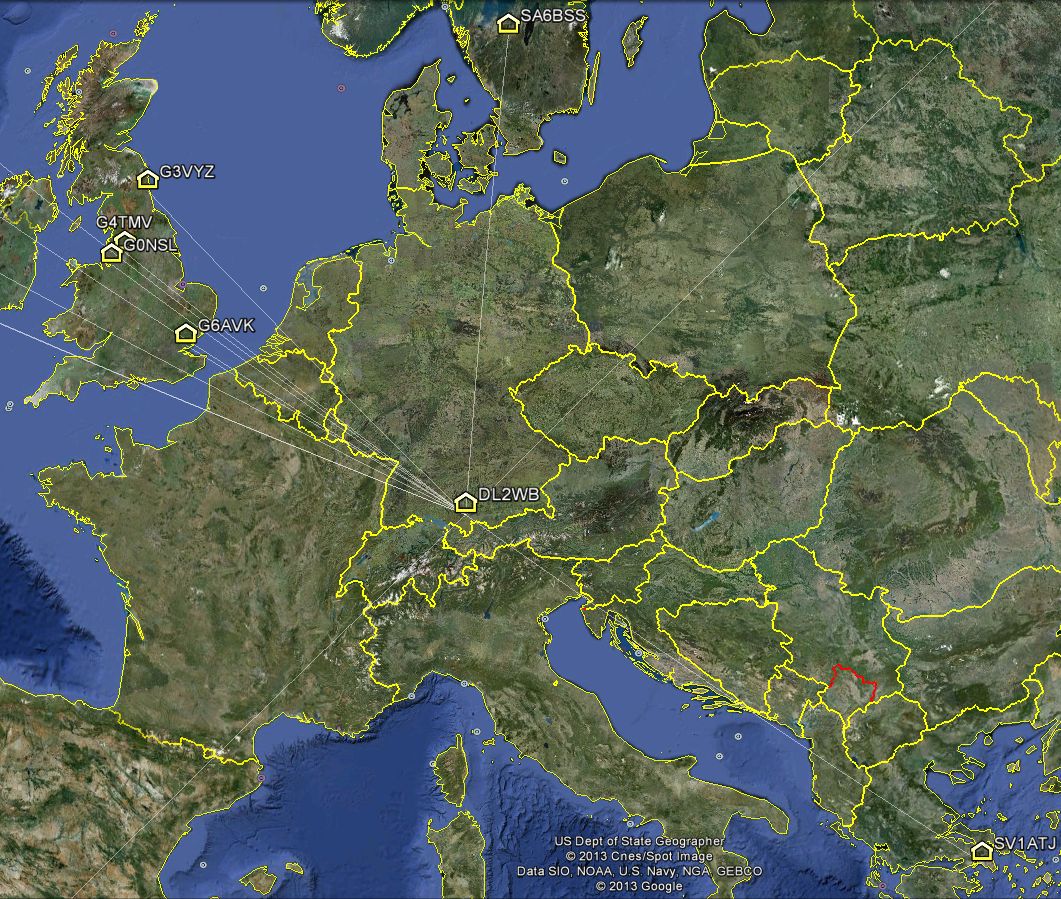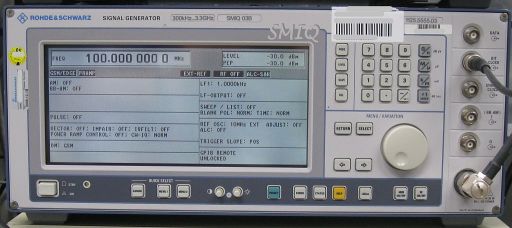
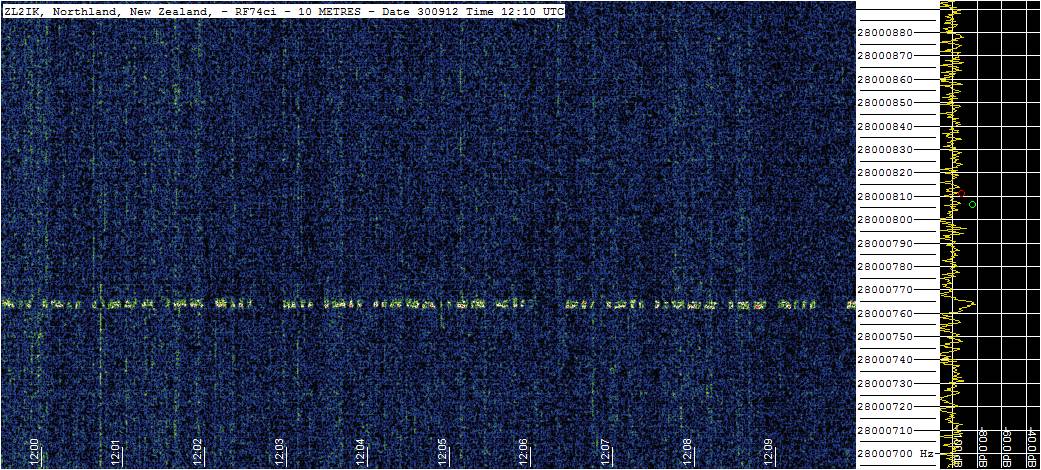
Several operators make their monitoring available
on-line, this is called a grabber.
KCØTKS, N2NXZ
and W4HBK may
be stated as an example.
A crucial point to QRSS operation is a very high
frequency accuracy on both RX and TX side.
You should keep drift down to less than 100 Hz over one hour.
My current setup is a professional Rohde&Schwarz SMIQ signal generator:

It features an accuray of +/- 3 Hz if stand-alone, and
can be synchronized to GPS, if required.
The antenna is again a vertical whip.
Due to the bad 10 m conditions so far, its output is amplified by 40 dB
using a linear amplifier.
With that I can achieve up to 10 W of RF output (for the above image I
used 4 W)
See an overview of the setups that I have evaluated so far.
As part of my
Manned-Experimental-Propagation-Tests (MEPT) I operate a QRSS
beacon mostly on 28.000750 MHz.
Other centers of activity on 10 m may be around
28.221530 MHz (Chris, KCØTKS, has initiated a small circle of
interested hams who put their signal around there) and 28.322000 MHz
(mostly frequented by Italian fellows).
Mileage highscore:
| Band | used power (equivalent isotropically radiated power) | mileage
in km per Watts EIRP |
| 10 m / 28 MHz | 4 W EIRP | 4537 km / W EIRP (tnx
ZL2IK !) |
